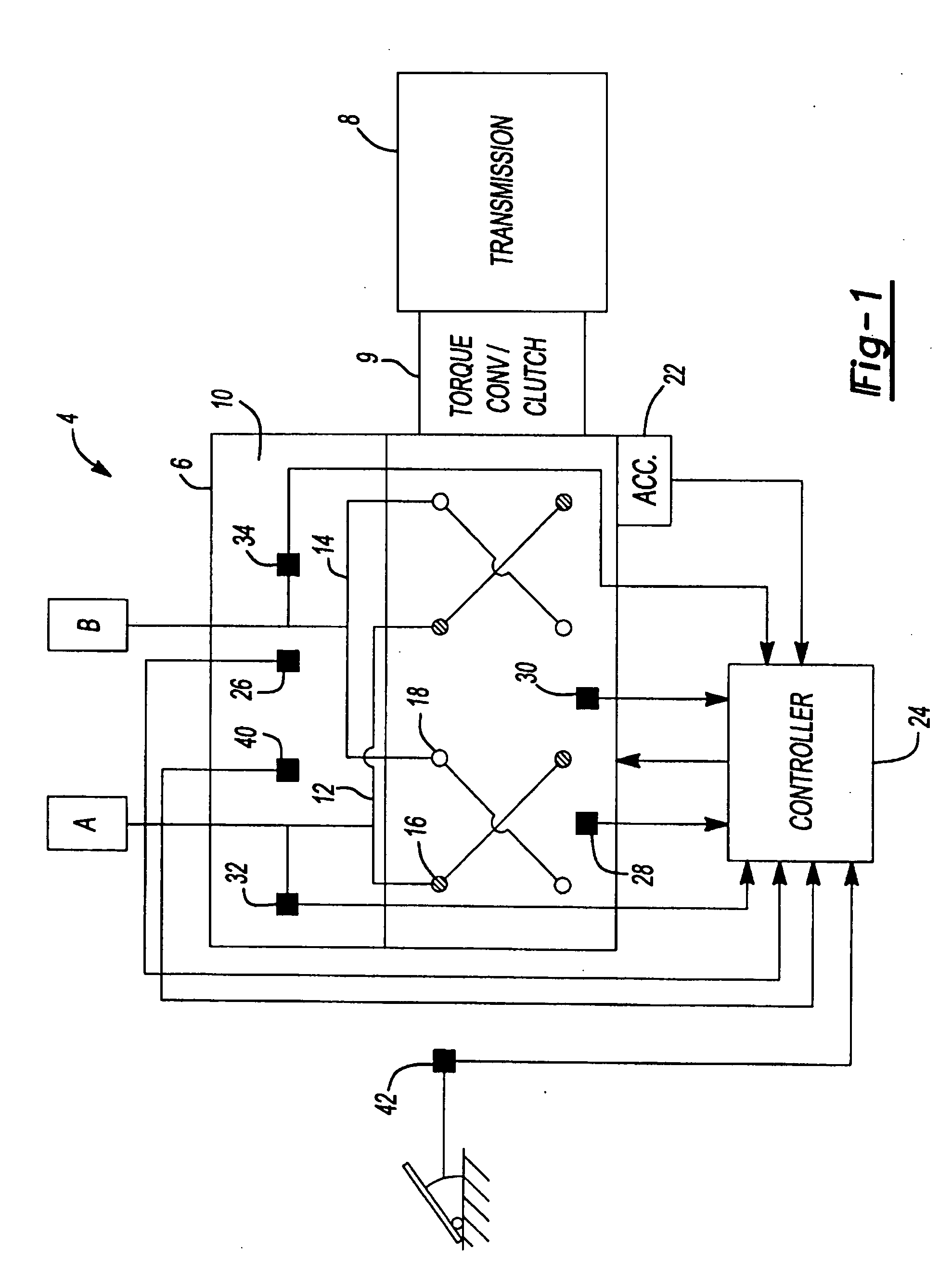DOD throttling and intake control
a technology of intake control and throttle throttling, which is applied in the direction of electric control, combustion engines, machines/engines, etc., can solve the problems of reducing driving experience and inability to achieve seamless torque transitions using these systems, and achieve the effect of smooth torque curv
- Summary
- Abstract
- Description
- Claims
- Application Information
AI Technical Summary
Benefits of technology
Problems solved by technology
Method used
Image
Examples
Embodiment Construction
[0014] The following description of the preferred embodiment is merely exemplary in nature and is in no way intended to limit the invention, its application, or uses. For purposes of clarity, the same reference numbers will be used in the drawings to identify similar elements. As used herein, activated refers to operation using all of the engine cylinders. Deactivated refers to operation using less than all of the cylinders of the engine (one or more cylinders not active).
[0015] Referring now to FIG. 1, a vehicle 4 includes an engine 6 drivingly coupled to a transmission 8. Transmission 8 is either an automatic or a manual transmission that is driven by the engine 6 through a corresponding torque converter or clutch 9. Air flows into the engine 6 through an intake manifold 10 having a first passageway 12 and a second passageway 14. The first and second passageways are separated from one another. A first set of engine cylinders 16 is in communication with first passageway 12 to rece...
PUM
 Login to View More
Login to View More Abstract
Description
Claims
Application Information
 Login to View More
Login to View More - R&D
- Intellectual Property
- Life Sciences
- Materials
- Tech Scout
- Unparalleled Data Quality
- Higher Quality Content
- 60% Fewer Hallucinations
Browse by: Latest US Patents, China's latest patents, Technical Efficacy Thesaurus, Application Domain, Technology Topic, Popular Technical Reports.
© 2025 PatSnap. All rights reserved.Legal|Privacy policy|Modern Slavery Act Transparency Statement|Sitemap|About US| Contact US: help@patsnap.com



